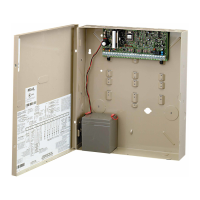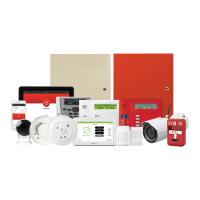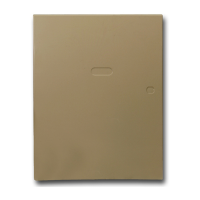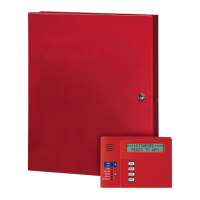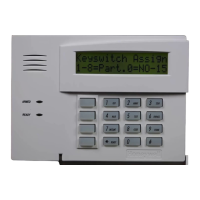VISTA-15P/20P/SIA Installation and Setup Guide
27
Troubleshooting (Continued)
Problem and Message:
“E4” or “E8” along with “Busy
Standby” (Alpha)
“E4” or “E8” (Fixed)
1. E4 means that there is a Low receiver on the system which will support up to 8
wireless zones and there are more than 8 wireless zones programmed.
2. E8 means that there is a Medium receiver on the system which will support up to 16
wireless zones and there are more than 16 wireless zones programmed.
3. Use the Transmitter ID Sniffer Mode (Installer code + # + 3, system must be
“READY”). The keypad will scroll through all zones that have a serial number
programmed. Use the process of elimination to see which zones do not need to be
programmed and delete the zones. If the zone(s) already have a Zone Type 00, delete
the zone properly by selecting 1 for YES when prompted to delete zone. This will also
remove the serial number. If deleting zones is not an option, change the receiver out
for a higher capacity receiver. A High receiver will allow all wireless zones in the panel
to be programmed.
Problem:
Key Fob is not working after
programming it into zones
1. The Fob must be assigned to a user, else it will not function. Assign it by typing in
the Master Code + 8 + XX + # + 4 + YY where XX is the user number and YY is any
single zone number of the fob. Once this command is entered and you get a
confirmation beep, all buttons on the fob will work.
2. If the above command does not get a confirmation beep, check that the zones are
set as Input Type 5 “BR” (if set to Input Type 3, the zones will only show faulted when
the buttons are pressed). Make sure you use the Master Code and NOT the Installer
Code. Type the command in so there are no pauses else the panel will not see the
command.
3. By default, the Fobs are enabled for High Security and must be Synced with the
panel or the Fob can be taken out of High Security mode. See the Installation
Instructions or the Direct Wire docs for the Fob being used on certain systems to sync
the fob in High Security mode.
Problem:
Panel not sending signals
immediately or not at all
Check *50 Dialer Delay. By default, this is set for 30 seconds and affects the on-board
dialer and AlarmNet communicator (if used). If the system is disarmed from an alarm
before the 30 seconds expires, no signals will be sent. You can either wait for this
delay or you can disable it. Also, make sure all desired report codes are enabled. Other
programming fields to check:
*29 LRR (If AlarmNet is used)
*40 PABX
*41 Pri Phone No.
*42 Sec Phone No.
*43 Pri Account No. (This CANNOT be blank)
*44 Sec Account No. (If Sec Phone No. is used)
*47 Phone Select
*48 Report Format
*49 Split / Dual Reporting
*54 Dynamic Signaling Delay (If AlarmNet is used)
*55 Dynamic Signaling Priority (If AlarmNet is used)
Problem and Message:
Central Station is receiving
“Troubles” instead of Alarms
Exit Alarm (Alpha)
EA (Fixed)
Check to see if central station is receiving an E374. Central stations will typically treat
this signal as a “Trouble”. This is “Exit Error” logic which will occur if an Entry/Exit or
interior zone is faulted at the end of the exit delay. This can also happen within 2
minutes after the exit delay expires. You can either wait out this time before tripping
zones or it can be disabled in *59 for non-SIA panels.
Problem and Message:
Comm Fail (Alpha)
FC (Fixed)
1. If a phone line is NOT being used, disable the dialer by deleting the phone numbers
out of the panel by typing in *40*, *41*, and *42*.
2. If a phone line is being used, it will probably be converted to VOIP somewhere
between premises and central station, through the phone company. This is not a
recommended method of communications as the panel’s dialer is not fully compatible
with VOIP. AlarmNet communicators are recommended instead, for a more reliable
communication path. A classic symptom of VOIP is the panel not hearing the kissoff
tone from central station receiver which will result in multiple signals at central station
and still going into Comm Fail after 10-15 minutes. This is just one of many
communication issues with VOIP. The dialer can be tested by entering a phone
number in *94, exit programming, and type in the Installer Code #1. This command will
force the panel to dial the number in *94.

